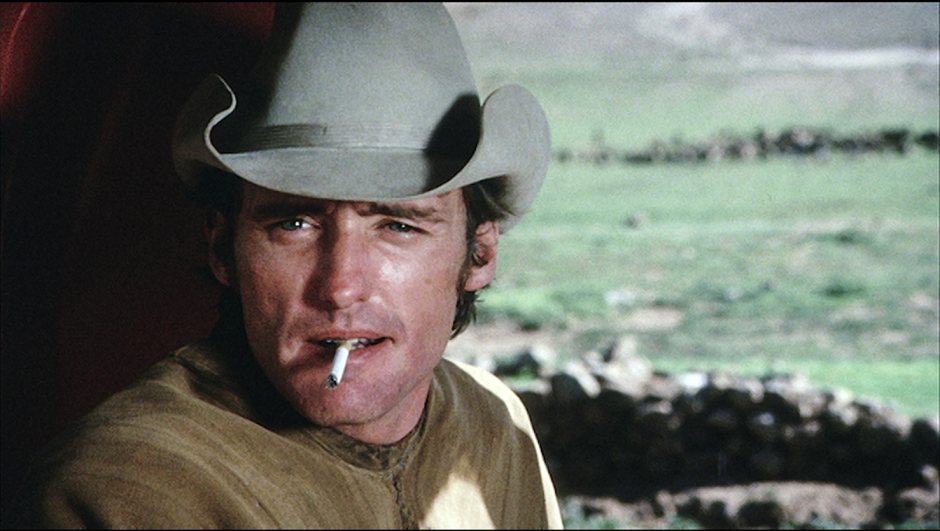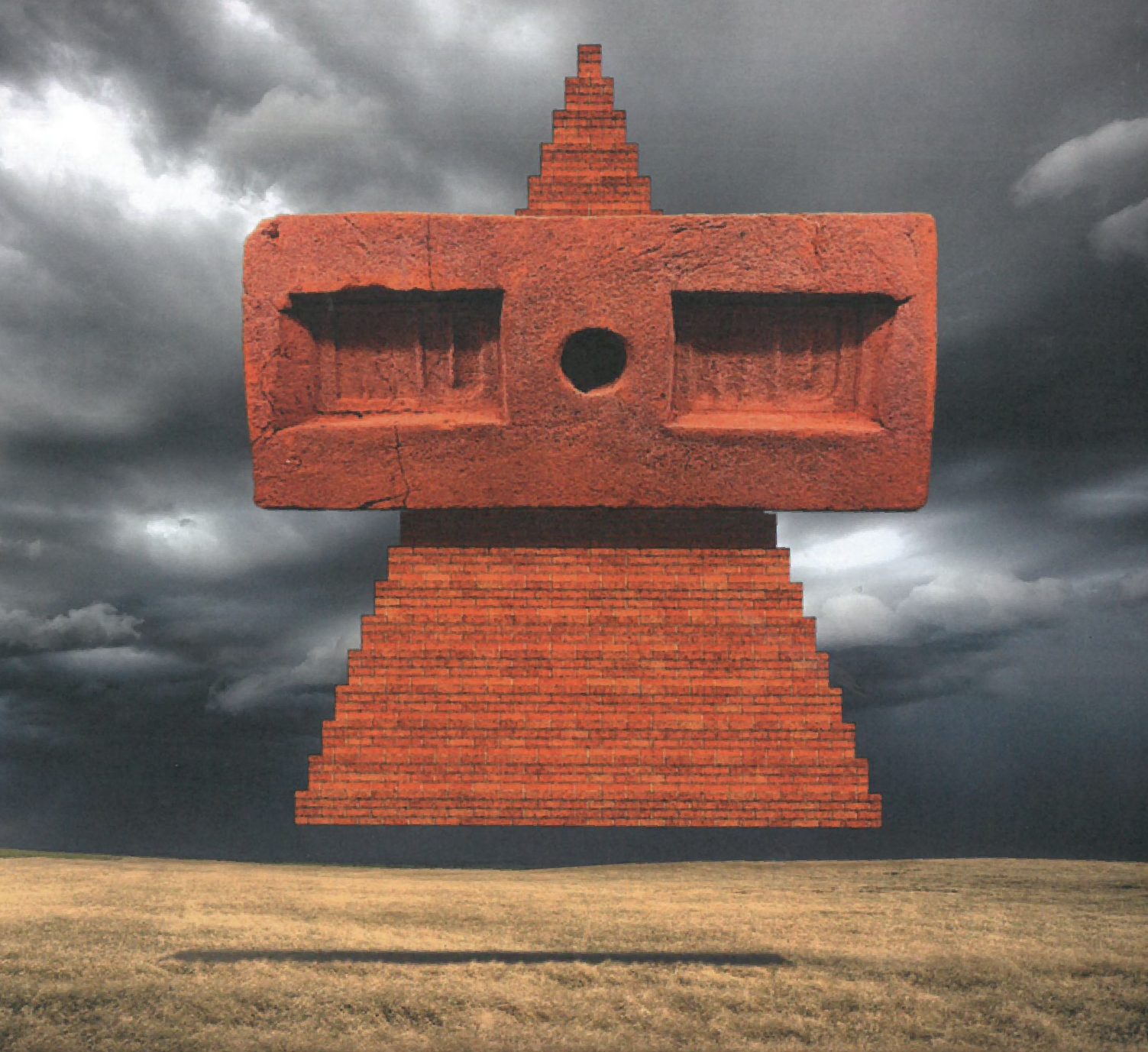American Dreamer: A Look At Dennis Hopper

At the tail end of the 1960s and into the early 1970s, Dennis Hopper had it all. He’d earned his acting stripes from his earliest appearances alongside the likes of James Dean, starring as a troubled teen in Rebel Without A Cause, appearing in numerous big name productions throughout the 60s, learning his chops under the tutelage of Lee Strasberg and his method style at the Actors’ Studio, before going on to write, direct and star in the film that became a totem for the counterculture, Easy Rider. Oh, and he was also there or thereabouts in other acid-soaked, revolutionary outings such as The Trip (check the recently issued UK Blu-ray for his performance in that psychedelic gem).
So when it came to his next directorial outing post-Easy Rider, a bona fide blockbuster, offering an enormous return on a not too hefty investment, he was given free rein to pretty much do what he liked.
The problem was, or rather, the many problems were, what he liked doing wasn’t always conducive to productive, or commercial filmmaking.
And so, with The Last Movie, he set the New Hollywood template for over-wrought, problematic filmmaking in the 1970s and beyond, one followed assiduously, if unintentionally, by the likes of Michael Cimino on Heaven’s Gate, Francis Ford Coppola with Apocalypse Now and Werner Herzog with Fitzcarraldo.
The problems before, during and after filming on those movies were chronicled in three groundbreaking documentaries looking at the process and struggle endured in the name of filmmaking by their directors; Hearts Of Darkness, Burden Of Dreams and Final Cut.
But, again, in the same way that Hopper’s influence, both good and bad, was ever-present in the New Hollywood and filmmaking of the 1970s (even if he was largely absent for much of the latter part of this era), so too The American Dreamer, a just re-released documentary looking at Hopper during the making of The Last Movie, was a huge influence upon that trio of documentaries.
The film, much like The Last Movie itself, has been largely hidden from view for years, but has now been brought to the public eye again, courtesy of boutique video-on-demand service Mubi.
It’s a fascinating insight into Hopper’s garbled creative process and can be as mystifying as the film itself. Part documentary and part fiction, part natural and part scripted, it’s difficult to see where the caricature of the hard-drinking, toking and womanising Hopper ends and the real-life Dennis begins.
"I was a photojournalist for Paris Match, Life, Sunday Times and others,” says Lawrence Schiller, who co-directed the film with Kit Carson, some 45 or so years after the film was shot. “I’d worked with Paul Newman, photographed him and directed a ska part of Butch Cassidy And The Sundance Kid. I wanted to do a documentary on Paul Newman, about someone who submerges himself in a film. But he didn’t want to do it at that point.”
Having developed a working relationship with Carson, Schiller discussed other potential subjects who completely immersed themselves in films.
“We said ‘why don’t we see if Dennis is interested in doing it?’ We went to see him and the idea fascinated him.”
Strangely, an in with a notorious counterculture figure – and killer – helped cement the plans. “[Dennis] wanted to meet Charlie Manson,” Schiller explains. “I had access to him through an attorney and arranged for him to see him.”
And thus, the film was born. “We discussed the idea of an actor submerging himself in the myth of being an actor,” explains Schiller. “And if Dennis is going to be playing an actor, then it can’t be a documentary. Dennis is an actor, he’ll be playing an actor…
“Everyone else will be real. It interested me even more, an actor plays himself as an actor.”
Hopper was equally enthused, as Schiller wryly notes: “Dennis loved the idea of Hopper playing Hopper.”
It helped that Schiller knew him (“I had photographed him on several movies, including Cool Hand Luke; I knew he was an art collector and a photographer”) and was also a fan (“i’d I’d seen Easy Rider, I thought it was phenomenal… as did the whole world”)
Given Schiller’s journalistic credentials – assorted picture of the year gongs, Pulitzer nominations – Hopper trusted him implicitly. “He gave us free access,” he recalls. “Hopper was interested in reality, no censorship on film.”
The shooting centred on Hopper’s bolthole where he was meant to be editing, although the arrival of assorted Playboy bunnies and groupies, hangers-on, drinkers, dealers and more delayed it somewhat.
And then, of course, there’s the question of how much was Hopper – he appears to be, ahem, enjoying the bath-based troilism with a couple of the aforementioned women and is equally enamoured of the rifle range and shooting antics – and how much was Hopper projecting what we wanted him to be.
“We shot for three weeks first, then went back and looked at the footage, then shot for another three weeks. We discovered we didn’t have an opening for the film. When he opens the door [in what is now its opening moment], that’s a directed scene, it’s an actor playing an actor."
“It’s like [old silent part-doc classic] Nanook Of The North, where an actor plays an eskimo."
“A lot of it was planned out, not every word.”
Eventually, after much going and froing, delays and deadlines (catalogued superbly in Peter Biskind’s Easy Riders And Raging Bulls must-read history of arguably Hollywood’s finest era). troubled The Last Movie was released. And promptly failed dismally.
Schiller doesn’t want to get into the rights and wrongs of the film or Hopper’s vision, only to say that: “I thought Dennis had got carried away with something… I don’t think the shoot was troubled, the editing was troubled.”
The fact it flopped hasn’t helped its accompanying documentary either. “The Last Movie came out, died overnight, this film was put on the shelf,” he says now. “Dennis insisted American Dreamer be showed with The Last Movie, we ended up donating it to the Walker Arts Centre.”
It was well received, playing particularly well at the kind of venues where Hopper held great sway. “Films are like books, they have a shelf life. It was a tremendous success on college campuses, which is kind of what it was designed for,” he notes, philosophically.
Now, it’s been rescued from the vaults, playing theatrically (with an accompanying exhibition of Schiller’s photographs at the Central Picturehouse and is also airing via boutique video-on-demand service Mubi (available at mubi.com).
“Walker came up with the idea to re-release the film, with the proceeds going to restoring other documentaries, so we van generate money and add to the Walker Arts Centre.”
He’s not then, we venture, a celluloid evangelist?
“We live in an age of evolution, enjoy the challenges of the technological worlds, I think its just another challenge that one has to address. I’m not a purist. I’m not the kind who says you can only see a 35mm print, you have to move with what the public requires. I did my job in the 1970s.”
What did Hopper himself think of the version? Schiller loosely stayed in contact with him (“we were acquaintances, not close friends. I knew David Lynch very well, we would bump into each other… His son lived across the street, but it wasn’t a close relationship.”), but could gauge his reaction:
“He didn’t see it until it was released, but he liked it.”
As for Schiller himself,, not only did it help him in his quest to become a filmmaker, but he can also appreciate it. “Its like looking at a puddle of water on the street. You get closer and closer to the puddle, then find there’s a well goes far deeper than the level of the street.
“It took on a life of its own. As I get closer and closer to Hopper, [he] fell into the well, we didn't know when the bottom would show up.”

















Must Reads
David Holmes – Humanity As An Act Of Resistance in three chapters
As a nation, the Irish have always had a profound relationship with the people of Palestine
Rotterdam – A City which Bounces Back
The Dutch city is in a state of constant revival
Going Remote.
Home swapping as a lifestyle choice
Trending track
Vels d’Èter
Glass Isle
Shop NowDreaming
Timothy Clerkin
Shop Now